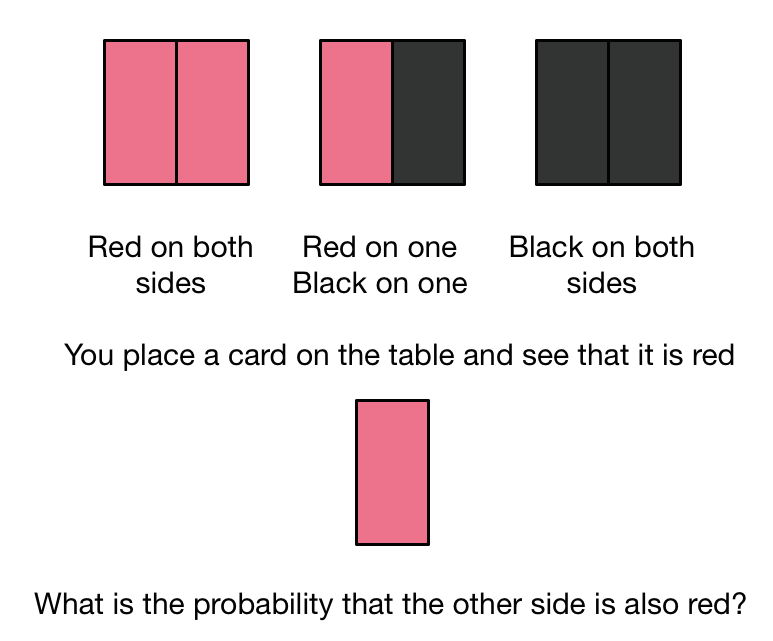Red-carded

There are three cards on a table. One of them is black on both sides, one of them is black on one side and red on the other, and one of them is red on both sides.
One of these three cards is selected at random and placed on a second table with a side randomly chosen to face up. The side facing upward is red.
What is the probability that the side facing the table is also red?
This section requires Javascript.
You are seeing this because something didn't load right. We suggest you, (a) try
refreshing the page, (b) enabling javascript if it is disabled on your browser and,
finally, (c)
loading the
non-javascript version of this page
. We're sorry about the hassle.
Relevant wiki: Probability - By Complement
The cards on the table have three red sides (two from the card red on both sides, one from the red-black card).
The only way the selected card could not have its other side be red is if the side facing upward is the single red side from the red-black card. Since there are three red sides, and the selection was random, the chances of this are 1/3. So the chance the other side IS red is 1 - 1/3 = 2/3.